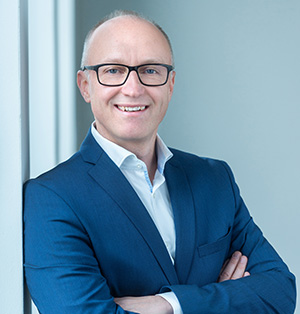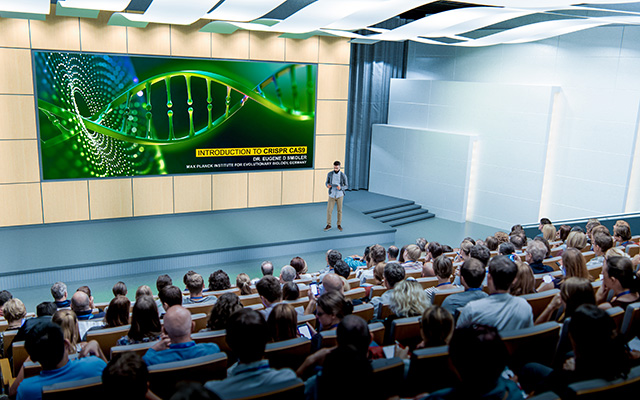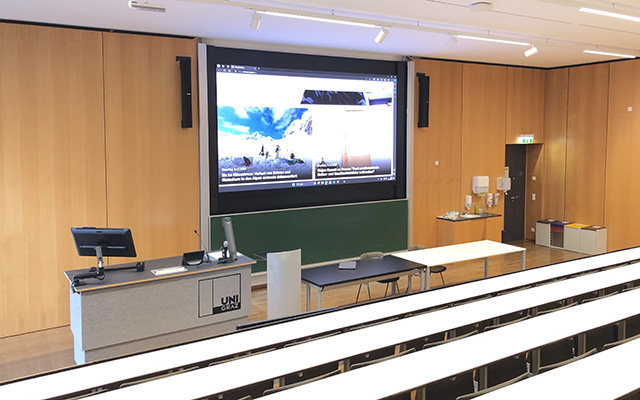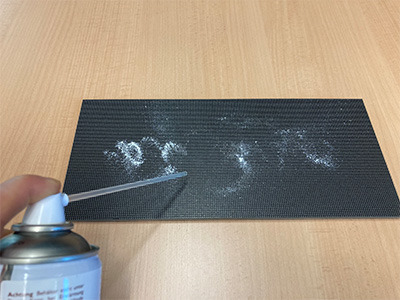The chalkboard has had its day: What users need to know about using LED technology in the higher education sector
Challenges in higher education
Student numbers have risen significantly in the past ten years. As a result, existing premises are no longer able to provide the space required for face-to-face teaching.
In addition, didactics, in other words, experimental, interactive, and cooperative formats in teaching, are growing in significance. The trend toward interdisciplinarity and establishing collaborative and collegial structures is also continuing in research. But there is often no suitable balance between the centralisation and decentralisation of important technical infrastructures (data centres, large-scale equipment) and spaces for – often unplanned – meetings, discussions and temporarily combining research groups. Campus structures spread across entire cities foster neither synergy nor frequent interaction.
That is why decentralised, hybrid teaching and research are becoming increasingly important. In this context, the infrastructure must enable as seamless a transition as possible between the digital and physical learning space. This opens up unimagined possibilities for teachers, researchers, and students, and makes universities future-proof.
 Matthias Hartmann, General Manager for the DACH Region
Matthias Hartmann, General Manager for the DACH Region
 The unlimited scalability of LED technology provides the ideal extra-large format visual anchor in a lecture theatre.
The unlimited scalability of LED technology provides the ideal extra-large format visual anchor in a lecture theatre.
Despite all this restructuring, universities must not compromise on the quality of teaching. Right now, they are dependent on retaining existing students and attracting new students, and a high-performance AV landscape is indispensable for this.
Universities today do not get very far without technical support for hybrid teaching methods – the chalkboard has definitely had its day. Unfortunately, however, many university directors do not know what a suitable, budget-friendly solution looks like, so good advice is crucial.
A seamless AV experience: what to look out for
Choose the right solution
The higher education sector should use professional displays that are manufactured sustainably, keep the total cost of ownership (TCO) as low as possible, and are designed for long-term use thanks to high-quality materials. Metal instead of plastic in production can extend the life cycle of the product in several ways: Firstly, it is significantly more robust than plastic, and secondly, it efficiently conducts heat away from the sensitive components inside the solution, which means they deliver high-quality performance for longer. And talking of heat: Metal instead of plastic significantly reduces the thermal load of the products – another plus point, especially in public buildings.
Users should also make sure that their manufacturers have spare parts in stock for as long as possible so that they can repair products quickly instead of having to replace them.
In this way, sensitive budgets in the higher education sector can be spared as much as possible and repair costs kept to a minimum.
In addition, a number of functionalities are recommended for teaching:
- Lecture recording
- Remote interaction
- Sound and image quality depending on room size and use
- Room sensors for smart integration and to save energy during operation
 Mounting with intechangeable LED-wall and chalkboard in a lecture hall - Courtesy of University of Graz, Austria
Mounting with intechangeable LED-wall and chalkboard in a lecture hall - Courtesy of University of Graz, Austria
Installation
The installation should be carried out by professional integrators, especially where LED technologies are concerned. They will not only ensure that the installation is carried out correctly, but can also oversee the ideal alignment and calibration of the modules.
Furthermore, they are familiar with carrying out installations in difficult environments such as on uneven walls, which is especially helpful in higher education, where teaching buildings are often protected historic monuments.
To ensure smooth operation, dedicated user training on how to maintain and clean the respective LED technology is also recommended.
Operation, cleaning and service
Regular maintenance of the LED wall will ensure a consistently good visual experience.
Sharp/NEC has an extensive partner network to provide all the service and maintenance work that users cannot carry out themselves. This ensures the best possible application quality for the solutions over the long term.
Especially in the higher education sector, chalk dust is still a concern for users with regard to digital signage – but here comes the good news! The chalkboard has had its day in teaching – apart from certain faculties like mathematics, where large chalkboards still serve a practical purpose, chalk dust is barely seen in university rooms these days.
If, however, a chalkboard is still used together with a digital alternative, the LED pixel cards – as shown in the picture of the experiment below – are particularly easy to clean.
Magnetic dust too, which may occur depending on the environment and is deposited on the magnets of the pixel cards, can simply be brushed away.
 Chalk dust particles are very easily cleaned from the LED pixel card
Chalk dust particles are very easily cleaned from the LED pixel card
Any special chalk dust protection measures (e.g. IP66) can therefore be safely dispensed with, as they are absolutely unnecessary and make the purchase needlessly expensive.
Disposal
After use, metal display solutions can be returned to the cycle via recycling. Some products are also suitable for refurbished programs, after which they can continue to be used.
Click here to find out more about the key solutions in higher education
References from the education sector
